formerly eScholarship Editions


|
|
|
|
Your search for
'Californian and Western History' in subject
found 68 book(s). | Modify Search | Displaying 1 - 20 of 68 book(s) | |
| 1. | 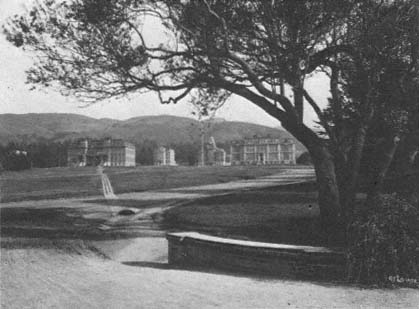 | Title: The University of California Press: the early years, 1893-1953. [ON ORDER FOR CAL & CAL*] Author: Muto, Albert Published: University of California Press, 1993 Subjects: History | Californian and Western History | Reference | Publishing Publisher's Description: In 1893, when the University of California was just twenty-five years old, its governing board took a bold step in voting the money to set up a publishing program for the works of its faculty. Like many of the American universities established in the late nineteenth century, California followed the German model of emphasizing original research among its faculty. But, then as now, commercial publishers were not prepared to publish the results, and so these early research universities began to publish for themselves. In the final quarter of the nineteenth century, Johns Hopkins, California, Chicago, and Columbia all began to publish. All four, in time, became scholarly publishers of consequence.In this book, published to commemorate the centennial of the University of California Press, Albert Muto chronicles the early history of the Press, from its beginnings as a printer of monographs by the University's own faculty to its emergence in the early 1950s as a full-fledged university press in the Oxbridge tradition.Profusely illustrated with archival photos and examples of early book design, this book gives us a new perspective on the history of publishing in the United States, and on the early years of the nation's largest public university. [brief] Similar Items |
| 2. | 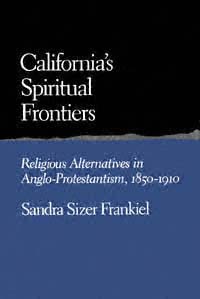 | Title: California's spiritual frontiers: religious alternatives in Anglo-Protestantism, 1850-1910 Author: Frankiel, Sandra Sizer 1946- Published: University of California Press, 1988 Subjects: History | Californian and Western History | California and the West | Christianity Publisher's Description: In this fascinating work, Frankiel examines California's rich, multi-faceted religious history during the period in which the state was taking shape on the American landscape. Similar Items |
| 3. | 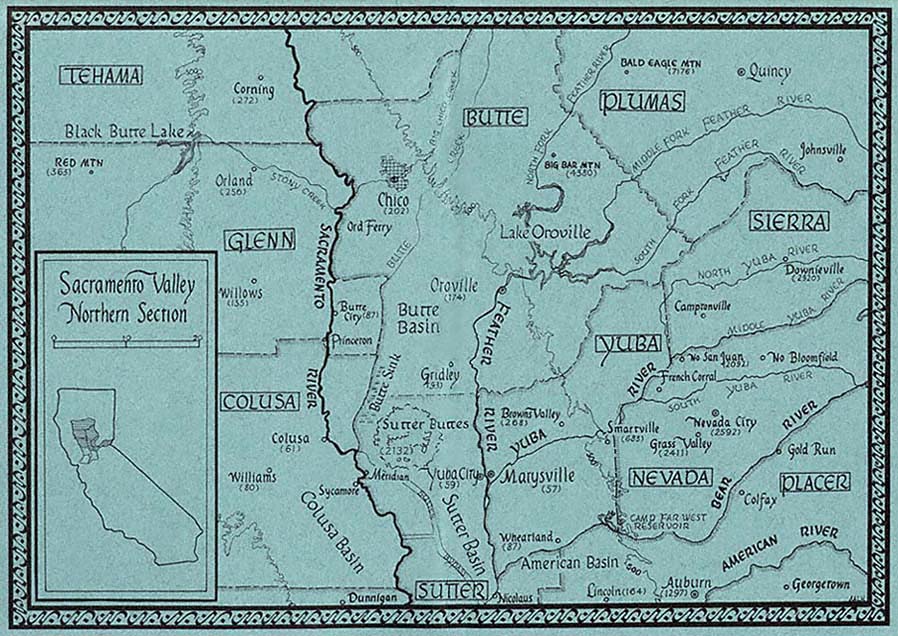 | Title: Battling the inland sea: American political culture, public policy, and the Sacramento Valley, 1850-1986 Author: Kelley, Robert Lloyd 1925- Published: University of California Press, 1998 Subjects: History | Californian and Western History | Politics Publisher's Description: In its natural condition the Sacramento Valley was a flood-ravaged region where an inland sea a hundred miles long regularly formed during the rainy season, to drain slowly away by the summer months. Today the Valley is marvelously productive, with a great capital city at its center, but only after a seventy-year struggle to devise and build an intricate thousand miles of levees and drains. Robert Kelley sets that battle within the encompassing national political culture, which produced, through the Republican and Democratic parties, widely diverging ideas about how best to reclaim the Valley from flood. He draws on approaches developed in the field of policy analysis to examine the relationship between American political culture and environmental policy-making. We find that the prolonged controversy over the Sacramento Valley illuminates American decision-making, then and now. [brief] Similar Items |
| 4. | 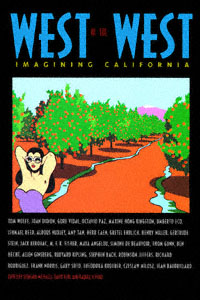 | Title: West of the West: imagining California: an anthology Author: Michaels, Leonard 1933- Published: University of California Press, 1995 Subjects: Literature | Californian and Western History | American Literature | Cultural Anthropology Publisher's Description: Conceived as a novelistic journey through the worlds of California, West of the West offers a vivid and diverse collection of writings on the state where extremes of every sort are dramatically evident in the weather, geography, and people. This richly fascinating collection represents the experience of California both physical and metaphysical, in fiction, poetry, essays, travel writing, confessions, reportage, and social criticism. The authors are native Californians, born-again Californians, exiles, émigrés, critics, and visitors of every kind - Jack Kerouac, Joan Didion, Amy Tan, Simone de Beauvoir, Carey McWilliams, Tom Wolfe, Gore Vidal, Octavio Paz, Jean Baudrillard, Ishmael Reed, Allen Ginsberg - to name just a few. [brief] Similar Items |
| 5. | 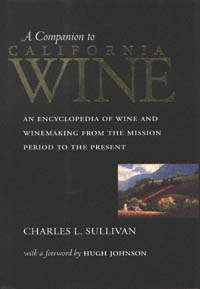 | Title: A companion to California wine: an encyclopedia of wine and winemaking from the mission period to the present Author: Sullivan, Charles L. (Charles Lewis) 1932- Published: University of California Press, 1998 Subjects: Viticulture | California and the West | Californian and Western History | Wine Publisher's Description: California is the nation's great vineyard, supplying grapes for most of the wine produced in the United States. The state is home to more than 700 wineries, and California's premier wines are recognized throughout the world. But until now there has been no comprehensive guide to California wine and winemaking. Charles L. Sullivan's A Companion to California Wine admirably fills that gap - here is the reference work for consumers, wine writers, producers, and scholars.Sullivan's encyclopedic handbook traces the Golden State's wine industry from its mission period and Gold Rush origins down to last year's planting and vintage statistics. All aspects of wine are included, and wine production from vine propagation to bottling is described in straightforward language. There are entries for some 750 wineries, both historical and contemporary; for more than 100 wine grape varieties, from Aleatico to Zinfandel; and for wine types from claret to vermouth - all given in a historical context.In the book's foreword the doyen of wine writers, Hugh Johnson, tells of his own forty-year appreciation of California wine and its history. "Charles Sullivan's Companion ," he adds, "will provide the grist for debate, speculation, and reminiscence from now on. With admirable dispassion he sets before us just what has happened in the plot so far." [brief] Similar Items |
| 6. | 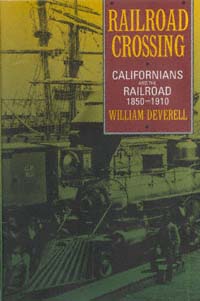 | Title: Railroad crossing: Californians and the railroad, 1850-1910 Author: Deverell, William Francis Published: University of California Press, 1994 Subjects: History | California and the West | United States History | Californian and Western History Publisher's Description: Nothing so changed nineteenth-century America as did the railroad. Growing up together, the iron horse and the young nation developed a fast friendship. Railroad Crossing is the story of what happened to that friendship, particularly in California, and it illuminates the chaos that was industrial America from the middle of the nineteenth century through the first decade of the twentieth.Americans clamored for the progress and prosperity that railroads would surely bring, and no railroad was more crucial for California than the transcontinental line linking East to West. With Gold Rush prosperity fading, Californians looked to the railroad as the state's new savior. But social upheaval and economic disruption came down the tracks along with growth and opportunity.Analyzing the changes wrought by the railroad, William Deverell reveals the contradictory roles that technology and industrial capitalism played in the lives of Americans. That contrast was especially apparent in California, where the gigantic corporate "Octopus" - the Southern Pacific Railroad - held near-monopoly status. The state's largest employer and biggest corporation, the S.P. was a key provider of jobs and transportation - and wielder of tremendous political and financial clout.Deverell's lively study is peopled by a rich and disparate cast: railroad barons, newspaper editors, novelists, union activists, feminists, farmers, and the railroad workers themselves. Together, their lives reflect the many tensions - political, social, and economic - that accompanied the industrial transition of turn-of-the-century America. [brief] Similar Items |
| 7. | 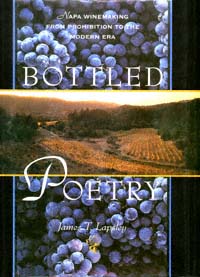 | Title: Bottled poetry: Napa winemaking from Prohibition to the modern era Author: Lapsley, James T Published: University of California Press, 1997 Subjects: History | California and the West | United States History | Californian and Western History | Viticulture | Wine Publisher's Description: California's Napa Valley is one of the world's premier wine regions today, but this has not always been true. James Lapsley's entertaining history explains how a collective vision of excellence among winemakers and a keen sense of promotion transformed the region and its wines following the repeal of Prohibition. Focusing primarily on the formative years of Napa's fine winemaking, 1934 to 1967, Lapsley then concludes with a chapter on the wine boom of the 1970s, placing it in a social context and explaining the role of Napa vineyards in the beverage's growing popularity.Names familiar to wine drinkers occur throughout these pages - Beaulieu, Beringer, Charles Krug, Christian Brothers, Louis Martini, Inglenook - and the colorful stories behind the names give this book a personal dimension. These strong-willed, competitive winemakers found ways to work cooperatively, both in sharing knowledge and technology and in promoting their region. The result was an unprecedented improvement in wine quality that brought with it a new reputation for the Napa Valley.In The Silverado Squatters , Robert Louis Stevenson refers to wine as "bottled poetry," and although Stevenson's reference was to the elite vineyards of France, his words are appropriate for Napa wines today. Their success, as Lapsley makes clear, is due to much more than the beneficence of sun and soil. Craft, vision, and determination have played a part too, and for that, wine drinkers the world over are grateful. [brief] Similar Items |
| 8. | 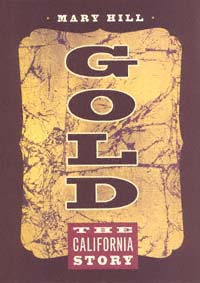 | Title: Gold: the California story Author: Hill, Mary 1923- Published: University of California Press, 2000 Subjects: California and the West | Californian and Western History | Geology | Natural History Publisher's Description: The discovery of gold in 1848 catapulted California into statehood and triggered environmental, social, political, and economic events whose repercussions are still felt today. Mary Hill combines her scientific training with a flair for storytelling to present the history of gold in California from the distant geological past through the wild days of the Gold Rush to the present.The early days of gold fever drew would-be miners from around the world, many enduring great hardships to reach California. Once here, they found mining to be backbreaking work and devised machines to help recover gold. These machines pawed gravel from river bottoms and tore apart mountainsides, wreaking environmental havoc that silted rivers, ruined farmlands, and provoked the world's first environmental conflict settled in the courts. Native Americans were nearly wiped out by invading miners or their diseases, and many Spanish-speaking settlers - Californios - were pushed aside.Hill writes of gold's uses in today's world for everything from coins to coffins, gourmet foods to spacecraft. Her comprehensive overview of gold's impact on California includes illustrated explanations of geology and mining in nontechnical language as well as numerous illustrations, maps, and photographs. [brief] Similar Items |
| 9. | 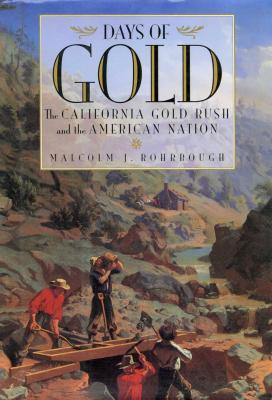 | Title: Days of gold: the California Gold Rush and the American nation Author: Rohrbough, Malcolm J Published: University of California Press, 1997 Subjects: History | California and the West | Californian and Western History | United States History | American Studies | Gender Studies Publisher's Description: On the morning of January 24, 1848, James W. Marshall discovered gold in California. The news spread across the continent, launching hundreds of ships and hitching a thousand prairie schooners filled with adventurers in search of heretofore unimagined wealth. Those who joined the procession - soon called 49ers - included the wealthy and the poor from every state and territory, including slaves brought by their owners. In numbers, they represented the greatest mass migration in the history of the Republic.In this first comprehensive history of the Gold Rush, Malcolm J. Rohrbough demonstrates that in its far-reaching repercussions, it was the most significant event in the first half of the nineteenth century. No other series of events between the Louisiana Purchase and the Civil War produced such a vast movement of people; called into question basic values of marriage, family, work, wealth, and leisure; led to so many varied consequences; and left such vivid memories among its participants.Through extensive research in diaries, letters, and other archival sources, Rohrbough uncovers the personal dilemmas and confusion that the Gold Rush brought. His engaging narrative depicts the complexity of human motivation behind the event and reveals the effects of the Gold Rush as it spread outward in ever-widening circles to touch the lives of families and communities everywhere in the United States. For those who joined the 49ers, the decision to go raised questions about marital obligations and family responsibilities. For those men - and women, whose experiences of being left behind have been largely ignored until now - who remained on the farm or in the shop, the absences of tens of thousands of men over a period of years had a profound impact, reshaping a thousand communities across the breadth of the American nation. [brief] Similar Items |
| 10. | 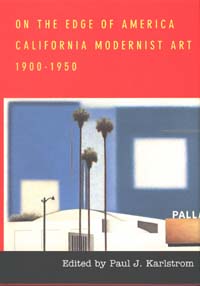 | Title: On the edge of America: California modernist art, 1900-1950 Author: Karlstrom, Paul J Published: University of California Press, 1996 Subjects: Art | Art History | California and the West | United States History | Californian and Western History Publisher's Description: To many, California's social and cultural identity has set it apart from the rest of the nation. Identified almost exclusively with Hollywood and popular culture, the entire region has been denied a meaningful relationship to mainstream twentieth-century modernism. This groundbreaking collection emphatically challenges that assumption. In essays about California art during the first half of the century, the contributors evoke a culture, now recognizable as modernist, that reflects the actual circumstances of contemporary West Coast artistic experience in all its richness. The subjects include painting, murals, sculpture, film, photography, and architecture.The issue of regionalism is central to this remarkable collection. How do we build a cultural portrait of an area that reveals its distinctive character while recognizing its participation in the larger art historical framework? Through the essays runs the theme of an alternative culture that transformed modernism to suit its own regional imperatives. Compelled by a sense of distance and the need for reinvention, California artists created traditions for a new cultural landscape and society. On the Edge of America is an enlightening and visually exciting addition to the growing literature on California art and culture. Through its fresh and expanded view of modernism, it is also well suited to the formulation of a truly national cultural narrative, one that embraces the edges as well as the center of American creative life. [brief] Similar Items |
| 11. | 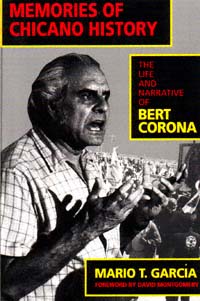 | Title: Memories of Chicano history: the life and narrative of Bert Corona Author: García, Mario T Published: University of California Press, 1994 Subjects: History | United States History | Latino Studies | Chicano Studies | Autobiography | Californian and Western History | Autobiographies and Biographies Publisher's Description: Who is Bert Corona? Though not readily identified by most Americans, nor indeed by many Mexican Americans, Corona is a man of enormous political commitment whose activism has spanned much of this century. Now his voice can be heard by the wide audience it deserves. In this landmark publication - the first autobiography by a major figure in Chicano history - Bert Corona relates his life story.Corona was born in El Paso in 1918. Inspired by his parents' participation in the Mexican Revolution, he dedicated his life to fighting economic and social injustice. An early labor organizer among ethnic communities in southern California, Corona has agitated for labor and civil rights since the 1940s. His efforts continue today in campaigns to organize undocumented immigrants.This book evolved from a three-year oral history project between Bert Corona and historian Mario T. García. The result is a testimonio , a collaborative autobiography in which historical memories are preserved more through oral traditions than through written documents. Corona's story represents a collective memory of the Mexican-American community's struggle against discrimination and racism. His narration and García's analysis together provide a journey into the Mexican-American world.Bert Corona's reflections offer us an invaluable glimpse at the lifework of a major grass-roots American leader. His story is further enriched by biographical sketches of others whose names have been little recorded during six decades of American labor history. [brief] Similar Items |
| 12. | 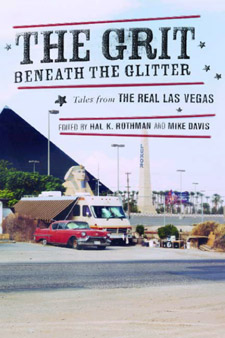 | Title: The grit beneath the glitter: tales from the real Las Vegas Author: Rothman, Hal 1958- Published: University of California Press, 2002 Subjects: American Studies | Sociology | Politics | California and the West | Urban Studies | Geography | Environmental Studies | Californian and Western History Publisher's Description: The Grit Beneath the Glitter is the first real look at the new Las Vegas from the inside. In it, long-time residents as well as professionals reflect on the transformation of one of the fastest-growing and most famous cities on earth, yet one about which relatively little is known. They offer a lively and compelling portrait of the other side of Las Vegas: the people and institutions that support the glitter of the gaming and entertainment industry. Examining a range of topics--from the city's commercial history, labor conditions, and environmental problems to an analysis of the famous lights of the Strip--the contributors uncover the contradictions between the illusion and the reality of the city, the seam between fantasy and the life it masks. The essays in this collection explore the world that employees experience when they enter gaming palaces from an employee entrance in a back parking lot rather than through the scripted doors of casino/hotel palaces. They take readers into the neighborhoods where 1.4 million Americans now live, attend school, eat dinner, and go to work. [brief] Similar Items |
| 13. | 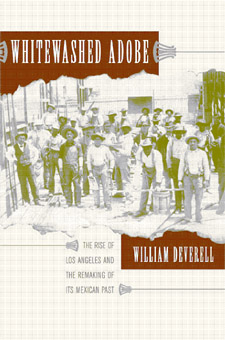 | Title: Whitewashed adobe: the rise of Los Angeles and the remaking of its Mexican past Author: Deverell, William Francis Published: University of California Press, 2004 Subjects: History | Californian and Western History | Chicano Studies | American Studies | Urban Studies Publisher's Description: Chronicling the rise of Los Angeles through shifting ideas of race and ethnicity, William Deverell offers a unique perspective on how the city grew and changed. Whitewashed Adobe considers six different developments in the history of the city - including the cementing of the Los Angeles River, the outbreak of bubonic plague in 1924, and the evolution of America's largest brickyard in the 1920s. In an absorbing narrative supported by a number of previously unpublished period photographs, Deverell shows how a city that was once part of Mexico itself came of age through appropriating - and even obliterating - the region's connections to Mexican places and people. Deverell portrays Los Angeles during the 1850s as a city seething with racial enmity due to the recent war with Mexico. He explains how, within a generation, the city's business interests, looking for a commercially viable way to establish urban identity, borrowed Mexican cultural traditions and put on a carnival called La Fiesta de Los Angeles. He analyzes the subtle ways in which ethnicity came to bear on efforts to corral the unpredictable Los Angeles River and shows how the resident Mexican population was put to work fashioning the modern metropolis. He discusses how Los Angeles responded to the nation's last major outbreak of bubonic plague and concludes by considering the Mission Play, a famed drama tied to regional assumptions about history, progress, and ethnicity. Taking all of these elements into consideration, Whitewashed Adobe uncovers an urban identity - and the power structure that fostered it - with far-reaching implications for contemporary Los Angeles. [brief] Similar Items |
| 14. | 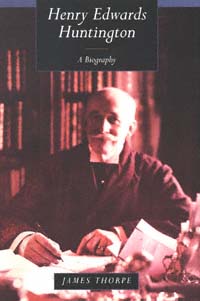 | Title: Henry Edwards Huntington: a biography Author: Thorpe, James Ernest 1915- Published: University of California Press, 1994 Subjects: History | California and the West | Californian and Western History | United States History | Autobiographies and Biographies Publisher's Description: A legendary book collector, a connoisseur of fine art, a horticulturist, and a philanthropist, Henry Edwards Huntington is perhaps best known as the founder of the world-renowned Huntington Library, Art Gallery, and Botanical Gardens in San Marino, California. James Thorpe's comprehensive biography of Huntington tells the richly human story of the man who became America's greatest book collector and was a leading figure in the development of southern California.Henry Edwards Huntington was born in New York State in 1850. He began working at the age of 17, eventually moved to California, and in later years was hailed for his vision in developing the street railway system that created the structure of the Los Angeles area. Always a lover of books, Huntington acquired many spectacular volumes - among them the complete Gutenberg Bible on vellum and the library of the Earl of Bridgewater. He also built a splendid art collection and established a grand botanical garden on the grounds of the buildings that would house his art and books. Then, in an act of philanthropy seldom equaled, he gave these great treasures to the public.The intimate side of Huntington's life appears in these pages, too. Thorpe has culled a vast trove of private letters, diaries, and other documents that reveal Huntington's exceptional personal qualities. The author's well-rounded biography of this unassuming yet gifted American is also richly evocative of the times in which Henry Edwards Huntington lived. [brief] Similar Items |
| 15. | 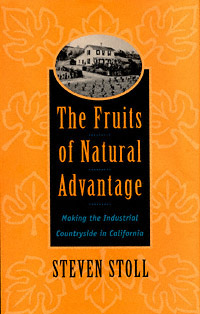 | Title: The fruits of natural advantage: making the industrial countryside in California Author: Stoll, Steven Published: University of California Press, 1998 Subjects: History | Californian and Western History | Environmental Studies | California and the West | Labor Studies Publisher's Description: The once arid valleys and isolated coastal plains of California are today the center of fruit production in the United States. Steven Stoll explains how a class of capitalist farmers made California the nation's leading producer of fruit and created the first industrial countryside in America. This brilliant portrayal of California from 1880 to 1930 traces the origins, evolution, and implications of the fruit industry while providing a window through which to view the entire history of California.Stoll shows how California growers assembled chemicals, corporations, and political influence to bring the most perishable products from the most distant state to the great urban markets of North America. But what began as a compromise between a beneficent environment and intensive cultivation ultimately became threatening to the soil and exploitative of the people who worked it.Invoking history, economics, sociology, agriculture, and environmental studies, Stoll traces the often tragic repercussions of fruit farming and shows how central this story is to the development of the industrial countryside in the twentieth century. [brief] Similar Items |
| 16. | 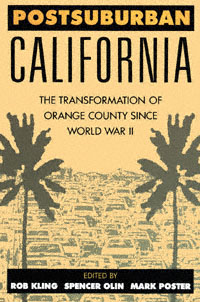 | Title: Postsuburban California: the transformation of Orange County since World War II Author: Kling, Rob Published: University of California Press, 1995 Subjects: History | Sociology | United States History | American Studies | California and the West | Urban Studies | Californian and Western History Publisher's Description: Neither a city nor a traditional suburb, Orange County, California represents a striking example of a new kind of social formation. This multidisciplinary volume offers a cogent case study of the "postsuburban" phenomenon. Similar Items |
| 17. | 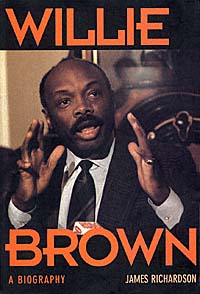 | Title: Willie Brown: a biography Author: Richardson, James 1953- Published: University of California Press, 1996 Subjects: Politics | History | United States History | Californian and Western History | Autobiographies and Biographies Publisher's Description: This is the first comprehensive biography of Willie Brown, one of California's most enduring and controversial politicians. Audacious, driven, talented - Brown has dominated California politics longer and more completely than any other public figure. James Richardson, a senior writer for The Sacramento Bee , takes us from Brown's childhood, through his years as Speaker of the State Assembly, to his election as San Francisco's mayor. Along the way we get a riveting, behind-the-scenes account of three decades of California politics. [brief] Similar Items |
| 18. | 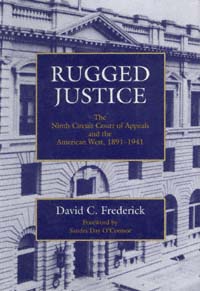 | Title: Rugged justice: the Ninth Circuit Court of Appeals and the American West, 1891-1941 Author: Frederick, David C Published: University of California Press, 1994 Subjects: History | History | United States History | Californian and Western History | California and the West | Law Publisher's Description: Few chapters in American judicial history have enjoyed as colorful a past as has the U.S. Court of Appeals for the Ninth Circuit. Created in 1891, its jurisdiction now encompasses California, Oregon, Nevada, Washington, Idaho, Montana, Arizona, Hawaii, and Alaska. David Frederick has mined archival sources, including court records and legal papers throughout the West and in Washington, D.C., to document the Ninth Circuit's first fifty years. His findings are much more than a record of the court, however, for they also provide a unique social and cultural history of the West.During these years, the court heard key cases involving railroads, the Alaska gold rush, Chinese immigration, organized labor, and use of natural resources. Many of the decisions from this period foreshadowed issues that are with us today. Frederick also documents the court's part in Western development and in issues relating to World War I, Prohibition, New Deal legislation, and the evolving role of federal judges.Frederick portrays the West's most important judicial institution with clarity and intelligence, reminding us that the evolution of the Ninth Circuit both reflected and affected the dramatic changes occurring in the West during the court's early years. This is a book that will appeal not only to lawyers, but to historians, sociologists, and general readers as well. [brief] Similar Items |
| 19. | 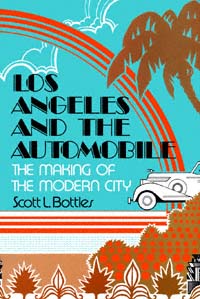 | Title: Los Angeles and the automobile: the making of the modern city Author: Bottles, Scott L Published: University of California Press, 1987 Subjects: American Studies | Californian and Western History | Urban Studies | United States History | American Studies Publisher's Description: More comprehensive than any other book on this topic, Los Angeles and the Automobile places the evolution of Los Angeles within the context of American political and urban history. Similar Items |
| 20. | 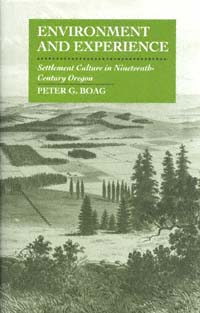 | Title: Environment and experience: settlement culture in nineteenth-century Oregon Author: Boag, Peter G Published: University of California Press, 1992 Subjects: History | United States History | Californian and Western History | Environmental Studies Publisher's Description: The pioneer battling with a hostile environment - whether it be arid land, drought, dust storms, dense forests, or harsh winters - is a staple of western American history. In this innovative, multi-disciplinary work, Peter Boag takes issue with the image of the settler against the frontier, arguing that settlers viewed their new surroundings positively and attempted to create communities in harmony with the landscape. Using Oregon's Calapooia Valley as a case study, Boag presents a history of both land and people that shows the process of change as settlers populated the land and turned it to their own uses.By combining local sources, ranging from letters and diaries to early maps and local histories, and drawing upon the methods of geography, natural history, and literary analysis, Boag has created a richly detailed grass-roots portrait of a frontier community. Most significantly, he analyzes the connections among environmental, cultural, and social changes in ways that illuminate the frontier experience throughout the American west. [brief] Similar Items |